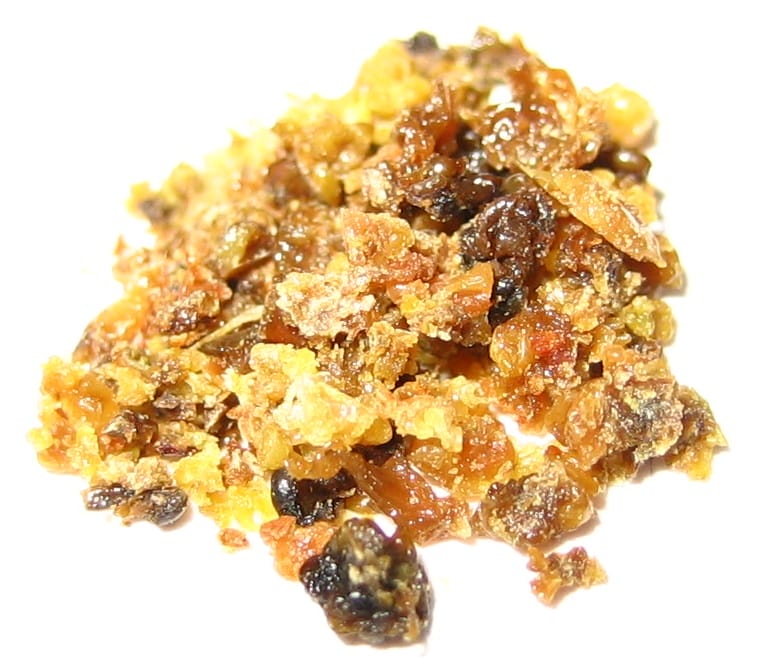Hallucinogenic drugs have been used for centuries in various cultures and civilizations. Ancient Rome is no exception, as there is evidence of the use of hallucinogenic substances in their society. These substances were used for various purposes, including religious ceremonies, entertainment, and medicinal purposes.
One of the most commonly used hallucinogenic substances in ancient Rome was the mandrake plant. The mandrake plant was believed to have magical properties and was often used in religious ceremonies and rituals. It was also used as an anesthetic during surgeries and medical procedures. The mandrake plant contains alkaloids that can cause hallucinations and delirium when ingested in large quantities.
Another hallucinogenic substance used in ancient Rome was the fly agaric mushroom. The fly agaric mushroom contains psychoactive compounds that can cause hallucinations and altered states of consciousness. It was often used in religious ceremonies and was believed to have magical properties. The fly agaric mushroom was also used as a recreational drug and was consumed by some individuals for its mind-altering effects.

Historical Context of Drug Use in Ancient Rome
The most commonly used hallucinogenic drug in ancient Rome was the mushroom Amanita muscaria. This mushroom contains psychoactive compounds that can cause hallucinations and altered states of consciousness. It was often used in religious ceremonies and was believed to have spiritual and healing properties.
Another popular hallucinogenic drug in ancient Rome was opium. Opium was imported from the East and was used for pain relief and to induce sleep. It was also used recreationally and was often mixed with wine to create a potent concoction. In addition to mushrooms and opium, ancient Romans also used cannabis, mandrake, and henbane for their hallucinogenic properties. These drugs were often used in religious and spiritual practices, as well as for recreational purposes.

It is important to note that while drug use was prevalent in ancient Rome, it was not without consequences. The use of drugs was often associated with addiction, and there were laws in place to regulate drug use. Despite this, drug use remained a significant part of ancient Roman culture and continues to be a topic of fascination for historians and archaeologists today.
Solanaceae Plants
Solanaceae plants were commonly used in ancient Rome for their hallucinogenic properties. These plants contain alkaloids such as scopolamine, hyoscyamine, and atropine, which can cause delirium, hallucinations, and other psychoactive effects. The most commonly used Solanaceae plants were mandrake, deadly nightshade, and jimsonweed. Mandrake was used for its sedative and pain-relieving properties, as well as its hallucinogenic effects.
It was often used in religious ceremonies and was believed to have magical properties. Deadly nightshade was also used for its hallucinogenic effects, but it was considered more dangerous due to its high toxicity. Jimsonweed was used as a recreational drug and was known for causing intense hallucinations and delirium.
Ergot Fungi
Ergot fungi were another common hallucinogenic substance used in ancient Rome. These fungi grow on rye and other grains and contain alkaloids such as ergotamine and ergonovine, which can cause hallucinations, convulsions, and other psychoactive effects. Ergot was often consumed in the form of bread or beer, and it was also used for medicinal purposes.
Henbane
Henbane was a plant commonly used in ancient Rome for its psychoactive effects. It contains alkaloids such as hyoscyamine and atropine, which can cause hallucinations, delirium, and other psychoactive effects. Henbane was often used in religious ceremonies and was believed to have magical properties. It was also used as a pain reliever and sedative.
Cultural Significance and Rituals
Hallucinogenic drugs played a significant role in religious ceremonies in ancient Rome. The use of these drugs was believed to enhance spiritual experiences and connect individuals with the divine. One of the most well-known examples of this was the Eleusinian Mysteries, a religious festival held in honor of Demeter and Persephone. Participants would consume a drink containing a psychoactive substance, likely ergot or psilocybin, and engage in rituals and ceremonies.

Besides religious ceremonies, hallucinogenic drugs were also used in social gatherings. These gatherings were often held by the elite and were seen as a way to connect with others and experience new sensations. The use of these drugs was not limited to the upper class, however, and was also used by the general population. The use of hallucinogenic drugs was seen as a way to connect with the divine and experience new sensations. While these drugs were used in both religious and social settings, they played a significant role in the culture and rituals of ancient Rome.
Medical Applications and Practices
Hallucinogenic drugs were not only used for recreational purposes in ancient Rome but also had medical applications. These drugs were used by physicians to treat various medical conditions.
One of the common medical uses of hallucinogenic drugs in ancient Rome was for pain relief. Opium, which is derived from the poppy plant, was commonly used to alleviate pain. The active ingredient in opium, morphine, is a powerful painkiller. However, opium also contains other alkaloids that can cause hallucinations. Physicians would sometimes use opium to induce a dream-like state in patients to distract them from their pain.

Another medical application of hallucinogenic drugs in ancient Rome was for treating mental illness. Physicians believed that mental illness was caused by an imbalance of the four humors – blood, phlegm, yellow bile, and black bile. Hallucinogenic drugs were used to induce a state of altered consciousness, which was believed to help restore the balance of the humors. Hallucinogenic drugs had various medical applications in ancient Rome, including pain relief, treatment of mental illness, and religious practices. While these drugs were used for therapeutic purposes, they were also associated with risks and potential side effects.
Legal and Ethical Considerations
The use of hallucinogenic drugs in ancient Rome was legal and widely accepted. However, there were still ethical considerations surrounding their use. One of the main ethical concerns was the potential for abuse and addiction. While the use of these drugs was generally accepted in religious and spiritual contexts, there was a risk of individuals using them for recreational purposes and becoming addicted.
Another ethical consideration was the potential harm caused by the drugs. While many users reported positive experiences, there were also reports of negative side effects such as anxiety, paranoia, and even psychosis.
Despite these concerns, the use of hallucinogenic drugs in ancient Rome was generally viewed as a personal choice and not subject to legal punishment. However, there were still societal expectations surrounding their use, such as using them in appropriate settings and with the guidance of experienced practitioners. Overall, while the use of hallucinogenic drugs in ancient Rome was legal, it was not without its ethical considerations and potential risks.
People Also Ask:
What substances were used for their psychoactive effects in ancient Rome?
Ancient Romans used a variety of substances for their psychoactive effects, including mushrooms, opium, and cannabis. However, the most commonly used psychoactive substance was a plant known as henbane, which was believed to induce visions and prophetic dreams.
How did ancient Romans incorporate drugs into their religious rituals?
Drugs were an integral part of many ancient Roman religious rituals. The use of psychoactive substances was believed to facilitate communication with the gods and the spirit world. Priests and priestesses would often consume psychoactive substances in order to induce visions and prophetic dreams.
Which plants were known to possess hallucinogenic properties in ancient Roman times?
In addition to henbane, other plants known to possess hallucinogenic properties in ancient Roman times included mandrake, belladonna, and datura. These plants were often used in religious rituals and were believed to have powerful spiritual properties.
What evidence exists of the use of mind-altering drugs during Roman festivities?
There are numerous accounts of the use of mind-altering drugs during Roman festivities. For example, the Roman festival of Saturnalia was known for its excessive drinking and drug use. Participants would consume large quantities of wine and other psychoactive substances in order to induce a state of euphoria and revelry.
Were there any documented cases of drug-induced visions or healing in Roman history?
Yes, there are many documented cases of drug-induced visions and healing in Roman history. For example, the Roman physician Galen wrote extensively about the use of psychoactive substances for medicinal purposes. He believed that certain drugs could be used to induce visions and prophetic dreams, as well as to treat a variety of physical and mental ailments.
How did the use of psychoactive drugs in ancient Rome compare to that of ancient Greece and Egypt?
The use of psychoactive drugs was widespread throughout the ancient world, and ancient Rome was no exception. However, the specific substances used and the ways in which they were incorporated into religious and cultural practices varied from culture to culture. In ancient Greece, for example, the use of psychoactive substances was closely tied to the worship of Dionysus, the god of wine and ecstasy. In ancient Egypt, psychoactive substances were used primarily for medicinal purposes.
Hello, my name is Vladimir, and I am a part of the Roman-empire writing team.
I am a historian, and history is an integral part of my life.
To be honest, while I was in school, I didn’t like history so how did I end up studying it? Well, for that, I have to thank history-based strategy PC games. Thank you so much, Europa Universalis IV, and thank you, Medieval Total War.
Since games made me fall in love with history, I completed bachelor studies at Filozofski Fakultet Niš, a part of the University of Niš. My bachelor’s thesis was about Julis Caesar. Soon, I completed my master’s studies at the same university.
For years now, I have been working as a teacher in a local elementary school, but my passion for writing isn’t fulfilled, so I decided to pursue that ambition online. There were a few gigs, but most of them were not history-related.
Then I stumbled upon roman-empire.com, and now I am a part of something bigger. No, I am not a part of the ancient Roman Empire but of a creative writing team where I have the freedom to write about whatever I want. Yes, even about Star Wars. Stay tuned for that.
Anyway, I am better at writing about Rome than writing about me. But if you would like to contact me for any reason, you can do it at [email protected]. Except for negative reviews, of course. 😀
Kind regards,
Vladimir
